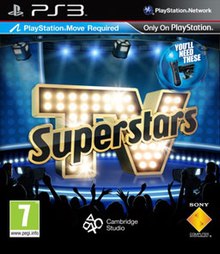
Ape Escape: Pumped and Primed, known in Japan as Gacha Mecha Stadium Saru Battle, is a video game developed by Japan Studio and published by Sony Computer Entertainment in Japan and Ubisoft in North America exclusively for PlayStation 2. It is the fourth title in the Ape Escape franchise. It was never released in Europe, despite being advertised in the UK and Australia.
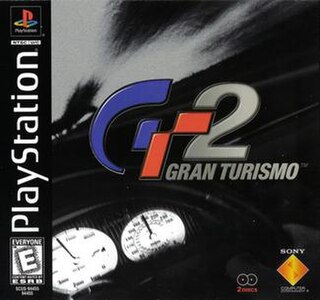
Gran Turismo 2 is a 1999 racing simulation video game developed by Polyphony Digital and published by Sony Computer Entertainment for the PlayStation. It is the sequel to Gran Turismo, the second installment of the Gran Turismo series and the first installment in the series without involvement from Japan Studio. It was a critical and commercial success, shipping 1.71 million units in Japan, 0.02 million in Southeast Asia, 3.96 million in North America, and 3.68 million in Europe for a total of 9.37 million units as of April 30, 2008, and eventually becoming a Sony Greatest Hits game.

Formula One 99 is a racing video game developed by Studio 33 and published by Psygnosis for PlayStation and Microsoft Windows. It is the sequel to the 1998 video game Formula 1 98 and was based on the 1999 Formula One World Championship.
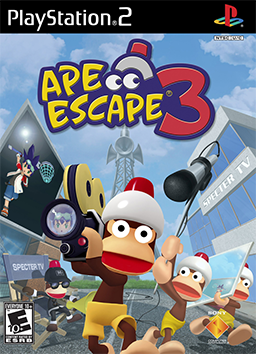
Ape Escape 3 is a platform video game published and developed by Sony Computer Entertainment for the PlayStation 2 video game console.
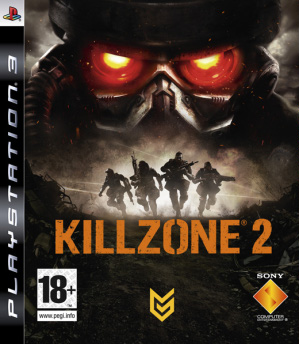
Killzone 2 is a 2009 first-person shooter developed by Guerrilla Games and published by Sony Computer Entertainment for the PlayStation 3. It is the second main installment in the Killzone series, following 2004's Killzone.

Virtua Tennis 3, known in Japan as Sega Professional Tennis: Power Smash 3, is the second arcade game sequel to Sega's tennis game franchise, Virtua Tennis. The arcade version of Virtua Tennis 3 is powered by the PC-based Sega Lindbergh arcade system board. Ports for the PC, Xbox 360, PlayStation Portable and PlayStation 3 consoles are also available with a traditional collection of tennis minigames that the home versions of Virtua Tennis are known for. In 2009, Sega updated and re-created Virtua Tennis 3 in Virtua Tennis 2009.

PlayStation Home was a virtual 3D social gaming platform developed by Sony Computer Entertainment's London Studio for the PlayStation 3 (PS3) on the PlayStation Network (PSN). It was accessible from the PS3's XrossMediaBar (XMB). Membership was free but required a PSN account. Upon installation, users could choose how much hard disk space they wished to reserve for Home. Development of the service began in early 2005 and it launched as an open beta on 11 December 2008. Home remained as a perpetual beta until its closure on 31 March 2015.
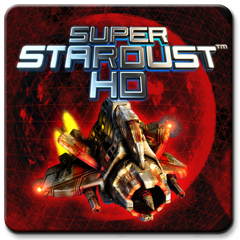
Super Stardust HD is a downloadable shoot 'em up video game that was released for the PlayStation 3 by Sony Interactive Entertainment, developed by the Finnish company Housemarque. In Asian regions, it is known as Star Strike HD. In 2015, a port for the PlayStation 4, called Super Stardust Ultra, was released. In 2016, Super Stardust Ultra VR, a PlayStation VR compatible version that contains Super Stardust Ultra, was released for the PlayStation 4. It is also available as paid downloadable content for Super Stardust Ultra.

Pain is an action video game developed by Idol Minds and published by Sony Computer Entertainment for PlayStation 3. It was released as a downloadable title available from the PlayStation Store and was released in North America on November 29, 2007 and in the PAL region on March 20, 2008 and became the most popular downloadable game on the PlayStation Store. In June 2009, SCEE announced that the game was to be released on Blu-ray Disc. It was launched in Europe on June 24, 2009, in Australia on June 25, 2009 and in the UK on June 26, 2009. The Blu-ray version includes the original game as well as several other levels and features released as downloadable content for the PSN version. It is available in a collection which is available to download from the PlayStation Store called the 3D Collection. On November 26, 2013, the game's online features were disabled.
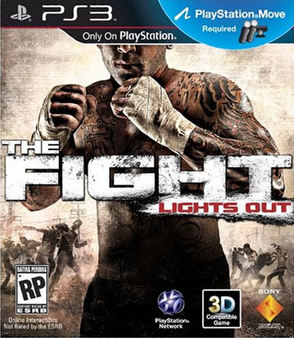
The Fight: Lights Out is a 2010 action fighting video game developed by ColdWood Interactive and published by Sony Computer Entertainment for the PlayStation 3. It utilizes the PlayStation Move controllers. It was unveiled at the 2010 Game Developers Conference in San Francisco and was released in November 2010.

PlayStation Move Ape Escape, simply titled Ape Escape in Europe and known in Asian countries as Ape Escape On The Move, and in Japan as Furi Furi! Saru Get You, is a 2010 rail shooter and party video game developed by Sony Computer Entertainment's Japan Studio and published by Sony Computer Entertainment for the PlayStation 3 video game console. The game was originally announced at the Tokyo Game Show 2009 as one of the title supporting the PlayStation Move controller. The title was released on December 9, 2010, in Japan, then in 2011 on June 24 for Europe, and on July 5 for North America. An English version of the game in Asia was also released January 31, 2011.

Start the Party! is a 2010 augmented reality party video game for the PlayStation 3. It utilizes the PlayStation Move controllers. It is the first game developed by Supermassive Games and was published by Sony Computer Entertainment for release as a launch title for the PlayStation Move. The game is a collection of augmented reality mini-games which use the PlayStation Eye.

MySims SkyHeroes is a video game developed by Behaviour Interactive and published by Electronic Arts. It is the sixth and final game in the MySims series. The game was released in 2010 for the Nintendo DS, PlayStation 3, Wii, and Xbox 360.

Sports Champions is a 2010 sports video game developed by San Diego Studio and Zindagi Games and published by Sony Computer Entertainment for PlayStation 3, which utilizes PlayStation Move. It was officially unveiled at the 2010 Game Developers Conference in San Francisco. The game is a collection of modern and medieval sports games published by Sony Computer Entertainment and was jointly developed by San Diego Studio and Zindagi Games as a launch game for the PlayStation Move which would be bundled with the controller in several regions.

The Shoot is a 2010 rail shooter video game for the PlayStation 3, which uses the PlayStation Move controllers. It is developed by Cohort Studios and published by Sony Computer Entertainment for release in North America on 19 October 2010, Australia on 28 October 2010, and Europe on 29 October 2010. It was officially unveiled at the 2010 Game Developers Conference in San Francisco.

Kung Fu Rider, known in Japan as Matchi Suberi (街スベリ), and previously known as Slider, is an action video game for the PlayStation 3. The game was developed by Japan Studio and published by Sony Computer Entertainment for use with the PlayStation Move controller. It was officially unveiled at the 2010 Game Developers Conference in San Francisco. It was released in 2010, and received mostly negative reviews from critics.

Virtua Tennis 4, known in Japan as Power Smash 4, is the third sequel to Sega's tennis game franchise, Virtua Tennis. It was released on PlayStation 3, Xbox 360, Microsoft Windows, Wii and PlayStation Vita. This is the first main series Virtua Tennis game to not have an arcade release before the console releases. An arcade version was also released, which is powered by the PC-based Sega RingEdge arcade system. There are two versions of the cabinet: an upright 4-player cabinet, and a deluxe 4-player cabinet.

Apache: Air Assault is a combat flight simulator video game for Microsoft Windows, PlayStation 3 and Xbox 360. It was developed by then-Russian developer Gaijin Entertainment, which is most famous for its World War II MMO-game War Thunder and published by Activision.

Birds of Steel is a combat flight simulator video game created by Gaijin Entertainment and published by Konami. It was released in March 2012 for PlayStation 3 and Xbox 360. The game includes more than one hundred non-fictional planes, twenty historical missions, and hundreds of procedural missions over sixteen different locations, including Pearl Harbor and Wake Island. It has single player, four player cooperative, and online multiplayer modes. Birds of Steel provided the base work for Gaijin Entertainment's MMO game War Thunder. The game consists of three difficulty settings, which change the way planes are flown: Simplified, an arcade play style, Realistic, a mix between an arcade play style and a simulation play style, and lastly Simulator, in which the planes handle as closely to real life as possible. A.I. difficulty is not affected by the selected play style.

Shadow of the Beast is an action-adventure game developed by Heavy Spectrum Entertainment Labs and published by Sony Interactive Entertainment for the PlayStation 4 in 2016. It is a remake and re-imagining of the 1989 game of the same name.
